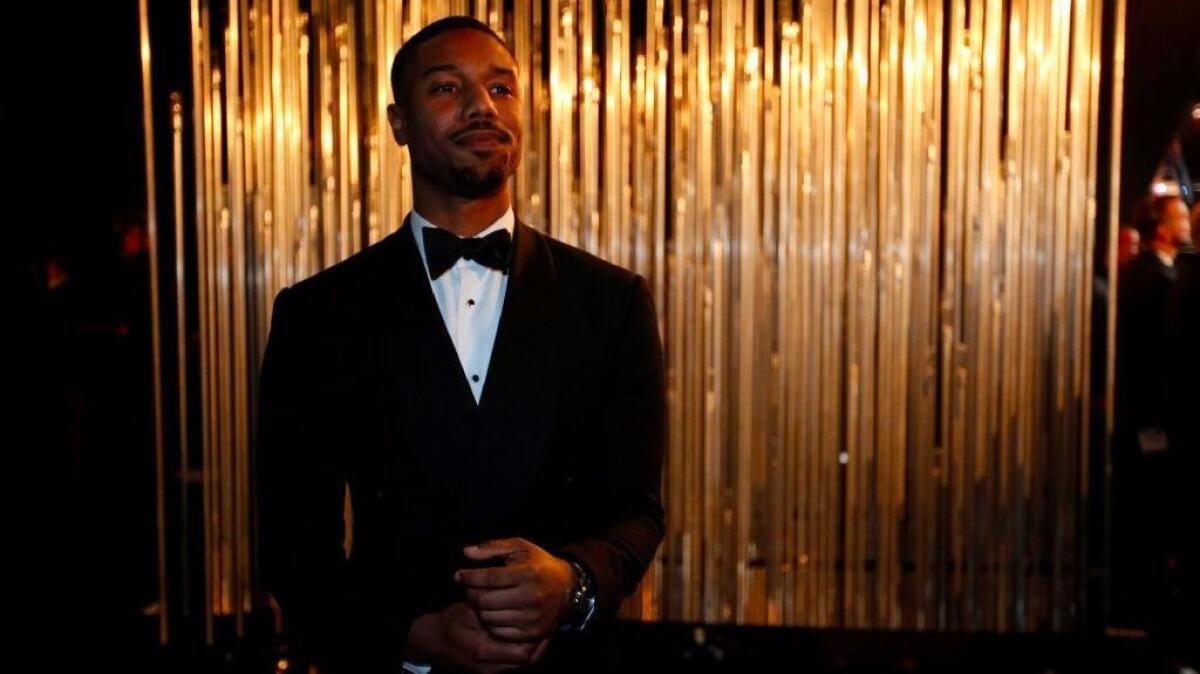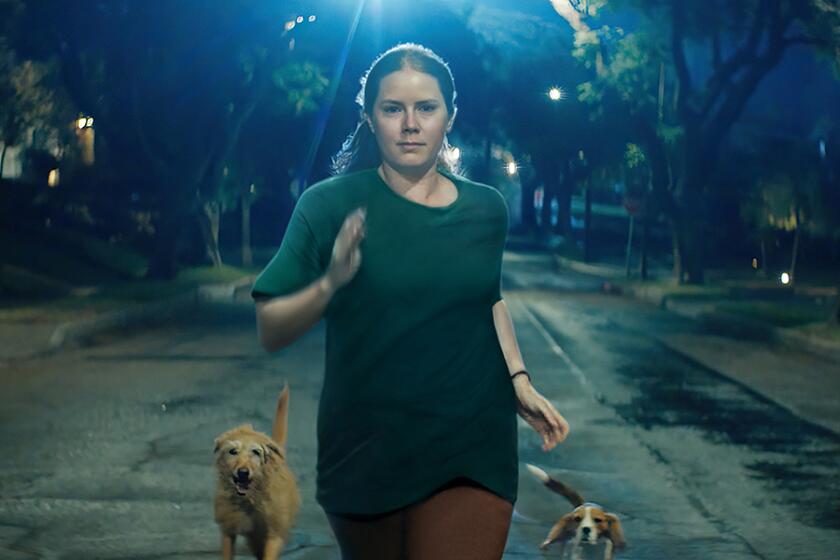Hollywood’s most exclusive club is about to get bigger and more diverse again: Five things to watch for

This week, hundreds of film professionals around the world will receive their industry’s equivalent of Willy Wonka’s Golden Ticket: an invitation to join the Academy of Motion Picture Arts and Sciences.
On Wednesday morning, the motion picture academy is expected to announce its newest class of members, the second such round of invitees since the nearly 90-year-old institution embarked on a concerted effort to diversify its overwhelmingly white and male ranks in the wake of the #OscarsSoWhite controversy that reached a crescendo in 2016.
Here are five things to watch out for:
1. The group will likely again be among the biggest and most diverse in the academy’s history.
Last year, in the wake of the #OscarsSoWhite firestorm, the academy brought in its largest and most diverse class of new members ever. In all, 683 industry professionals, including such boldfaced names as Idris Elba, Brie Larson, Michael B. Jordan, Emma Watson and Chadwick Boseman received invitations, more than double the 322 members who were invited the previous year.
The huge new class represented the first major step toward the organization’s stated goal to double the number of women and minorities in its ranks by 2020. Of last year’s class, 46% were female, bringing the representation of women in the organization from 25% to 27%. Forty-one percent were people of color, bumping up minorities’ share of total academy membership from 8% to 11%.
While it remains to be seen whether the new class will be as enormous as last year’s, if the academy hopes to meet its 2020 goals, it can’t ease off the pedal. And in a recent interview with The Times, academy CEO Dawn Hudson indicated the group has no intention of doing so.
“That commitment [to diversity] has not waned and will not wane for many years to come,” Hudson said. “Because I don’t see this industry getting a lot more diverse or having more gender parity any time real soon. So this work will be ongoing for the academy. And I know that it has inspired others to follow suit.”

2. As time goes on, though, meeting those goals may get more difficult.
According to a Times analysis conducted in July, in a single stroke, the 2016 class of invitees took the academy 52% of the way toward its goal of doubling the number of nonwhites in its ranks. As for boosting the representation of women, however, the academy slightly lagged behind pace; the 2016 class brought the academy only about a fifth of the way toward its 2020 target.
For the academy to meet its own 2020 goals, The Times has estimated that in the next three years the organization will have to invite 85 people of color to become members each year – a seemingly manageable number given that there were some 280 nonwhites in last year’s class alone.
Hitting the target in terms of female members, however, may prove a higher hurdle. The Times estimates that the academy will need to add 395 women to its ranks per year to reach its target – significantly more than the 314 it invited in 2016.
Given the persistent lack of diversity in the film industry as a whole, some think that the challenge of diversifying the academy’s membership could grow more difficult, not easier. A 2016 report by the USC Annenberg School for Communication and Journalism starkly outlined an “inclusion crisis” at the major studios, where directors are 97% male and 87% white, while women hold 21% of top executive positions and nonwhite actors earn just 27% of speaking roles.
As the study’s authors bluntly put it, “The film industry still functions as a straight, white boys’ club.”
3. A number of relatively fresh faces and people best known from TV are likely to make the cut. Still, the academy insists it isn’t changing its standards for membership.
Along with many longtime industry vets, last year’s class included a number of younger people who have only come onto the scene in the last few years, like “Star Wars: The Force Awakens” star John Boyega, as well as some who may be better known for their work in television than in film, such as Tina Fey and America Ferrera.
The academy prides itself on representing the cream of the crop in the film industry. While membership requirements vary among the individual branches, the academy’s overarching mandate states that candidates must have “demonstrated exceptional achievement in the field of theatrical motion pictures.”
Given the historic underrepresentation of women and minorities in Hollywood, however, some have expressed doubt that the academy’s diversity goals can be met without the risk of changing these membership requirements. In an interview with The Times in 2016, former academy President Hawk Koch called the targets “impossible” to reach, saying, “There aren’t that many qualified people, period, of any race or gender, to invite each year.”
But even as the boundary between film and television continues to blur, the academy leadership has consistently maintained it will not alter the criteria for membership. Hudson says she is confident that there are still many highly qualified film industry professionals out there who have yet to be brought into the fold.
“There are so many artists who were not admitted in the past because we had a limit on how many new members we invited each year,” she told The Times last month. “So with the elimination of those [quotas] and the aggressive pursuit of excellence by all of our members, I think we will be able to expand in a more inclusive way for several years.”
4. Much of that expansion will continue to come from outside of the United States.
In recent years, as part of its effort to transform itself into a more international organization, the academy has supplemented its traditional membership process with a global recruitment campaign. Of last year’s class, more than 40% of the new members came from abroad – both established filmmakers and actors like J.A. Bayona and Alicia Vikander as well as many people far less well known to American moviegoers – representing 59 countries around the globe.
Not only does such a global expansion broaden the academy’s pool of potential members, bringing its diversity goals closer within reach, but it furthers the group’s mission to become the preeminent organization representing the film community around the world, not just in Los Angeles.
For foreign invitees, such as Saudi filmmaker Haifaa Mansour, who was invited to join last year, being brought into Hollywood’s most exclusive club can be a life-changing experience. “Sometimes as a woman, and especially one from a foreign country, it gets hard for them to find a project that fits you as a director,” Mansour told The Times last year. “[The academy] is the most prestigious organization in the world. It anchors you in. It makes me more relevant. People actually take you seriously.”
But, as the academy extends its reach across the globe, it remains to be seen to what extent this more international membership may or may not be reflected in the kinds of films and performances that earn Oscar recognition.
5. While the new class may further boost diversity overall, the level of inclusion is likely to be uneven among the individual branches.
The increased diversity of last year’s class was particularly evident in the two most public-facing branches: the actors and directors branches. In the actors branch, which has historically been the largest and most diverse in the academy, just 29% of last year’s 69 invitees were white, compared with 68% of the previous year’s class.
Meanwhile, the directors branch, which added only three female members to its ranks in 2015, invited 52 women to join last year, including, among many others, “Wonder Woman” director Patty Jenkins.
In the executive branch, however, it was a very different story. Historically among the most overwhelmingly white and male branches, the executive branch made relatively smaller strides toward inclusion last year. Of the 31 invitees, nearly three-quarters were white, and as a result, the share of whites in the branch dropped only slightly, from 98% to 96%, while even with the addition of a number of female members, the branch remained 86% male.
Of course, it is the executive branch that holds the most influence over the kinds of movies that get made in the first place, crystallizing the challenge not just the academy but the entire industry will face when it comes to boosting the level of inclusion going forward.
Twitter: @joshrottenberg
More to Read
Only good movies
Get the Indie Focus newsletter, Mark Olsen's weekly guide to the world of cinema.
You may occasionally receive promotional content from the Los Angeles Times.









